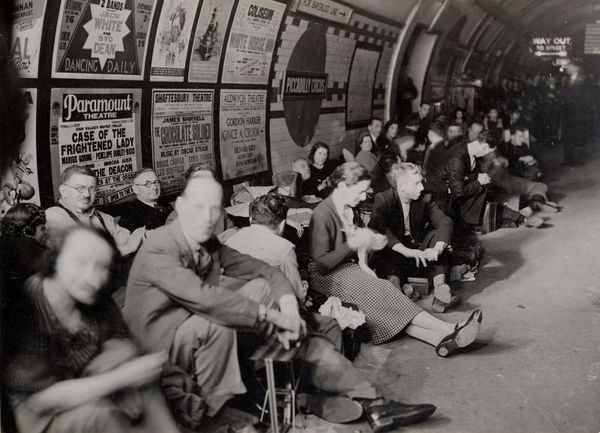
Echoes of the Blitz: Underground shelters in Ukraine and London
Content
1 March 2024 - Spring 2025
In partnership with Berlin-based journalistic network n-ost, London Transport Museum has created a display of 70 images that explore how Underground stations and metro systems provide shelter to citizens during periods of war – now and in the past.
The gallery features historical images from the Museum’s collection, and current works by six renowned documentary photographers working in Ukraine: Pavlo Dorohoi, Viacheslav Ratynskyi, Serhii Korovayny, Maxim Dondyuk, Mykhaylo Palinchak and Emile Ducke.
In the UK, the dominant images of wartime air raids are of Londoners sheltering in Tube stations in the 1940s. Since February 2022, similar scenes have been repeated daily in Metro systems in Ukraine.
Discover ordinary Ukrainian citizens in extraordinary circumstances, sleeping, cooking, washing clothes, caring for their pets and creating temporary make-shift homes in Metro stations in the Ukrainian capital Kyiv and its second largest city Kharkiv. These scenes are ‘echoed’ in the black and white archive images of Londoners taking refuge in Tube stations during the Second World War.
Despite these photos being taken around 80 years apart, they present strong parallels of human experience across different locations and conflicts. This exhibition documents the resilience of people in Ukraine and London during times of war and the reality of having to escape from aerial bombardment.
Quotes
I hated it to be quite frank. The idea of going down night after night. Home - shelter - home - shelter.
At night, we went down to the Metro, and in the morning, we returned to the restaurant, where we prepared breakfasts and lunches for people sheltering underground. We only paused if we heard an explosion.
Must-see images
Woman in tent at Dorohozhychi station by Maxim Dondyuk, 2 March 2022
Copyright Maxim Dondyuk, n-ost
Kyiv people sitting on escalators at Teatralna station by Viacheslav Ratynskyi, 26 January 2023
Copyright Viacheslav Ratynskyi, n-ost
Kharkiv woman takes shelter at Heroiv Pratsi station by Serhii Korovayny, 21 May 2022
Copyright Serhii Korovayny, n-ost
Read more...
In both world wars, the London Underground network provided much needed shelter from the horrors of air raids. Read about sheltering during wartime and how thousands of Londoners found shelter in Tube stations.
With London suffering major air raids during the Second World War, the London Underground became a natural source of shelter. Read how deep-level Tube stations sheltered thousands every night during the intensive bombing of the Blitz.
During the Second World War, Plessey defence electronics company built a secret factory in newly constructed Underground tunnels at the eastern end of the Central line. Read more about the factory within the Central line tunnels.
More from the Museum guide
Construction on early underground lines was expensive and chaotic. Explore how the Greathead shield made digging deep tunnels much easier and helped build the world's first electric railway.
From horse-drawn vehicles to trams, trolleybuses and the first motor buses, discover what surface transport was like in the first half of the 20th century.
Through both the First and Second World Wars, London’s transport system and its staff played a vital role in keeping the city moving and contributed to the wider war effort.













